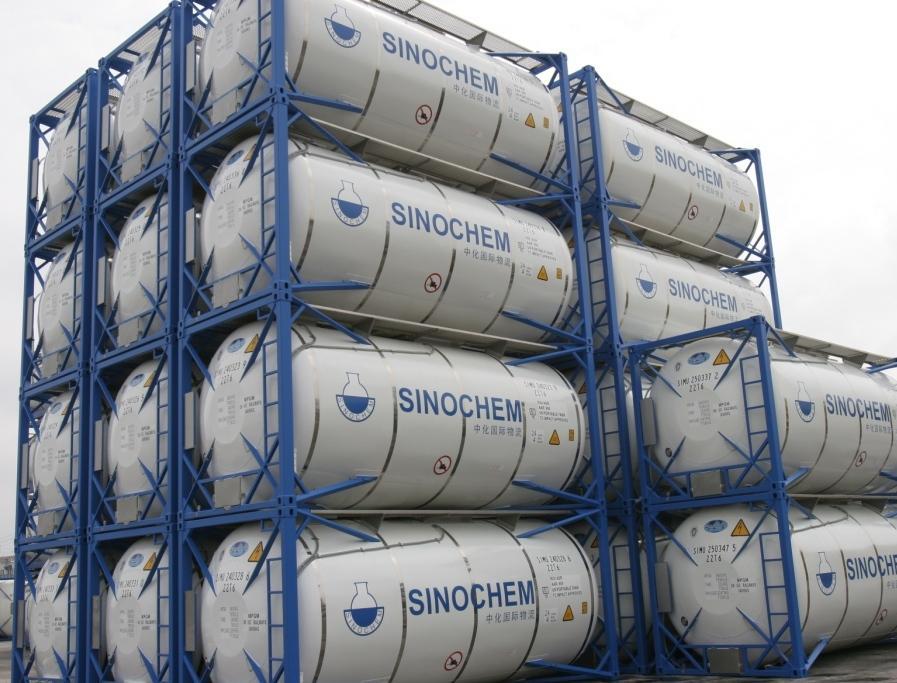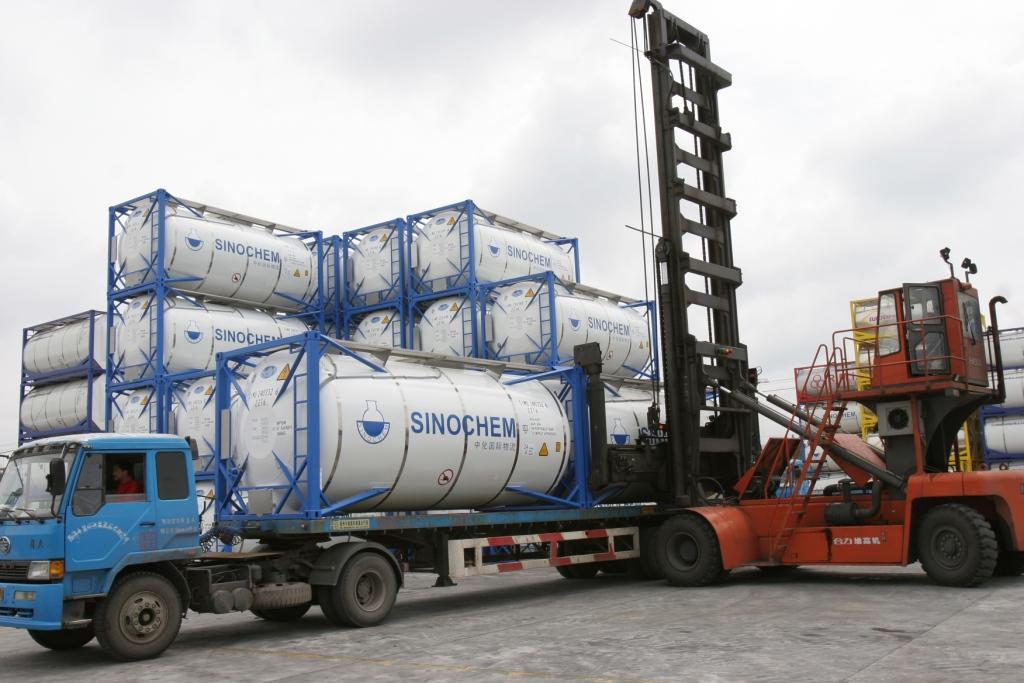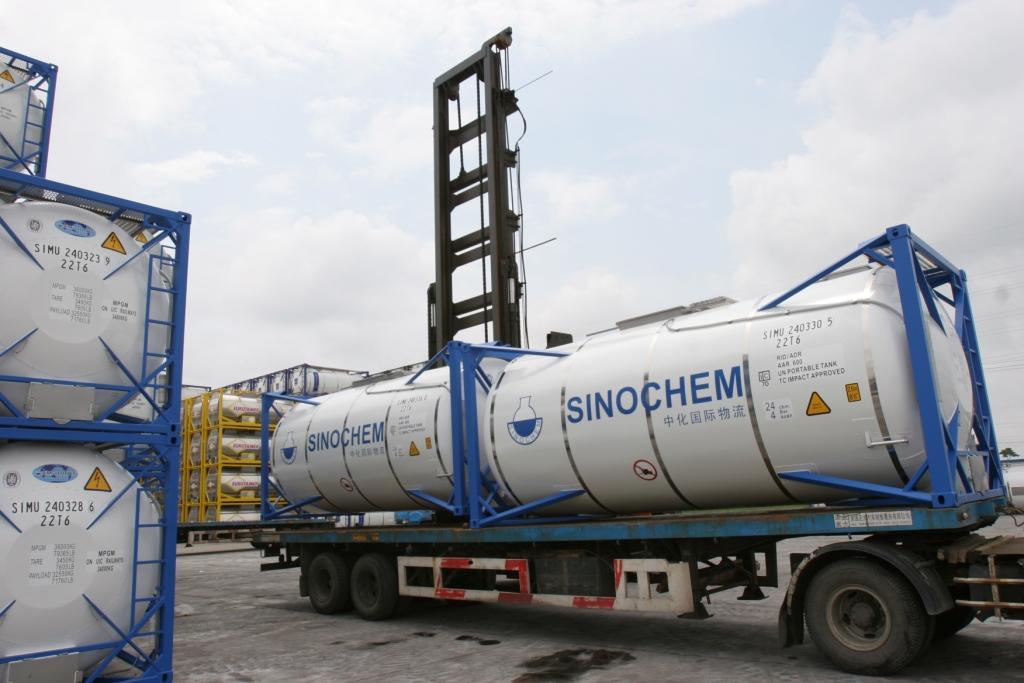Isopropyl Alcohol

  
Isopropyl alcohol (IUPAC name 2-propanol) is a chemical compound with the molecular formula C3H8O or C3H7OH or CH3CHOHCH3. It is a colorless, flammable chemical compound with a strong odor. It is the simplest example of a secondary alcohol, where the alcohol carbon atom is attached to two other carbon atoms sometimes shown as (CH3)2CHOH. It is a structural isomer of propanol.
Isopropyl alcohol is miscible in water, alcohol, ether and chloroform. It will dissolve ethyl cellulose, polyvinyl butyral, many oils, alkaloids, gums and natural resins.It is insoluble in salt solutions. Unlike ethanol or methanol, isopropyl alcohol can be separated from aqueous solutions by adding a salt such as sodium chloride, sodium sulfate, or any of several other inorganic salts, since the alcohol is much less soluble in saline solutions than in salt-free water. The process is colloquially called salting out, and causes concentrated isopropyl alcohol to separate into a distinct layer.
Isopropyl alcohol forms an azeotrope with water, which gives a boiling point of 80.37 °C (176.67 °F) and a composition of 87.7 wt% (91 vol%) isopropyl alcohol. Water-isopropyl alcohol mixtures have depressed melting points.It has a slightly bitter taste, and is not safe to drink.
Isopropyl alcohol becomes increasingly viscous with decreasing temperature. At temperatures below −70 °C (−94 °F), isopropyl alcohol resembles maple syrup in viscosity.
Isopropyl alcohol has a maximum absorbance at 205 nm in an ultraviolet-visible spectrum
In 1990, 45 thousand tonnes of isopropyl alcohol were used in the United States. The vast majority of isopropyl alcohol was used as a solvent for coatings or for industrial processes. In that year, 5.4 tonnes was consumed for household use and in personal care products. Isopropyl alcohol in particular is popular for pharmaceutical applications, it is presumed due to the low toxicity of any residues. Some isopropyl alcohol is used as a chemical intermediate. Isopropyl alcohol may be converted to acetone, but the cumene process is more significant. It is also used as a gasoline additive.
Solvent
Isopropyl alcohol dissolves a wide range of non-polar compounds. It also evaporates quickly, leaves nearly zero oil traces, compared to ethanol, and is relatively non-toxic, compared to alternative solvents. Thus, it is used widely as a solvent and as a cleaning fluid, especially for dissolving oils. Together with ethanol, n-butanol, and methanol, it belongs to the group of alcohol solvents, about 6.4 million tonnes of which were utilized worldwide in 2011.
Examples of this application include cleaning electronic devices such as contact pins (like those on ROM cartridges), magnetic tape and disk heads (such as those in audio and video tape recorders and floppy disk drives), the lenses of lasers in optical disc drives (e.g., CD, DVD) and removing thermal paste from heatsinks and IC packages (such as CPUs). Isopropyl alcohol is used in keyboard, LCD and laptop cleaning, is sold commercially as a whiteboard cleaner, and is a strong but safer alternative to common household cleaning products.It is commonly used to clean prepared optical fibers just before splicing. It is used to clean LCD and glass computer monitor screens (at some risk to the anti-reflection coating on some screens), and used to give second-hand or worn non-vinyl phonograph records newer-looking sheen. It is effective at removing Hot-Melt Adhesive from a large variety of surfaces. It is effective at removing residual glue from some sticky labels although some other adhesives used on tapes and paper labels are resistant to it. It can also be used to remove stains from most fabrics, wood, cotton, etc. In addition, it can also be used to clean paint or other oil-based products so that they may be reused, commonly known as "repainting." It is used as a wetting agent in the fountain solution used in lithographic printing, and often used as a solvent for French polishing shellac used in cabinet making.
Intermediate
Isopropyl alcohol is esterified to give isopropyl acetate, another solvent. It reacts with carbon disulfide and sodium hydroxide to give sodium isopropylxanthate, a herbicide and an ore flotation reagent.Isopropyl alcohol reacts with titanium tetrachloride and aluminium metal to give titanium and aluminium isopropoxides, respectively, the former a catalyst, and the latter a chemical reagent.This compound may serve as a chemical reagent in itself, by acting as a dihydrogen donor in transfer hydrogenation.
Medical
Disinfecting pads typically contain a 60–70% solution of isopropyl alcohol in water. Water is required to open up membrane pores of bacteria, which acts as a gateway inside for isopropyl. A 75% v/v solution in water may be used as a hand sanitizer.Isopropyl alcohol is used as a water-drying aid for the prevention of otitis externa, better known as swimmer's ear.
Early uses as an anesthetic
Although isopropyl alcohol can be technically used for anesthesia, its many negative drawbacks prohibit this use. Isopropyl alcohol can also be used similar to ether as a solvent or as an anesthetic by inhaling the fumes or orally. Early uses included using the solvent as general anesthetic for small mammals and rodents by scientists and some veterinarians. However, it was soon discontinued, as many complications arose, including respiratory irritation, internal bleeding, and visual and hearing problems. In rare cases, respiratory failure leading to death in animals was observed.
Automotive[edit]Isopropyl alcohol is a major ingredient in "gas dryer" fuel additives. In significant quantities, water is a problem in fuel tanks, as it separates from the gasoline, and can freeze in the supply lines at cold temperatures. Alcohol does not remove water from gasoline; rather, the alcohol solubilizes water in gasoline. Once soluble, water does not pose the same risk as insoluble water, as it will no longer accumulate in the supply lines and freeze. Isopropyl alcohol is often sold in aerosol cans as a windshield de-icer. Isopropyl alcohol is also used to remove brake fluid traces from hydraulic braking systems, so that the brake fluid (usually DOT 3, DOT 4, or mineral oil) does not contaminate the brake pads, which would result in poor braking.
Laboratory
As a biological specimen preservative, isopropyl alcohol provides a comparatively non-toxic alternative to formaldehyde and other synthetic preservatives. Isopropyl alcohol solutions of 70–99% are used to preserve specimens.
Isopropyl alcohol is often used in DNA extraction. It is added to a DNA solution in order to precipitate the DNA into a 'pellet' after centrifuging the DNA. This is possible because DNA is insoluble in isopropyl alcohol.
|







